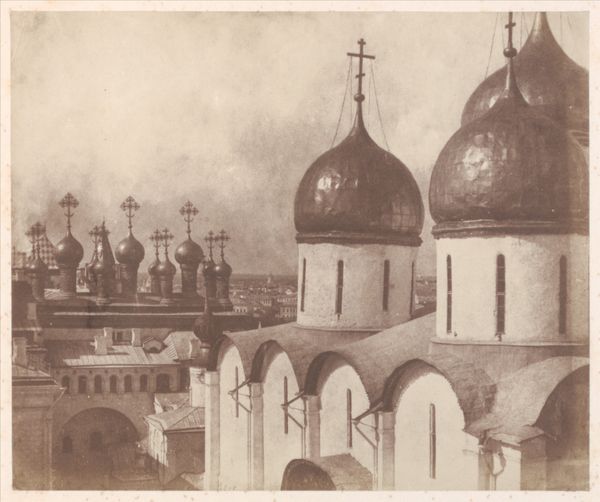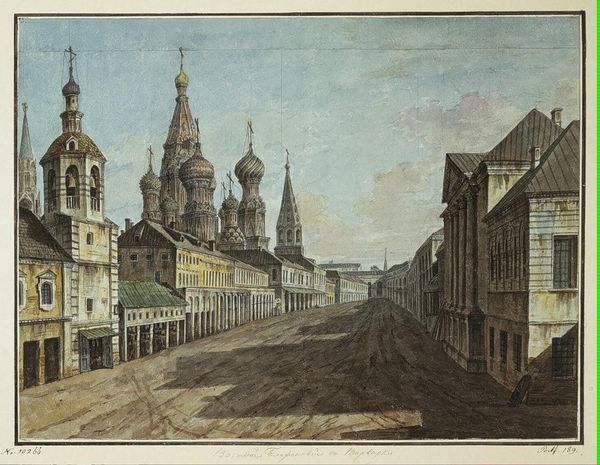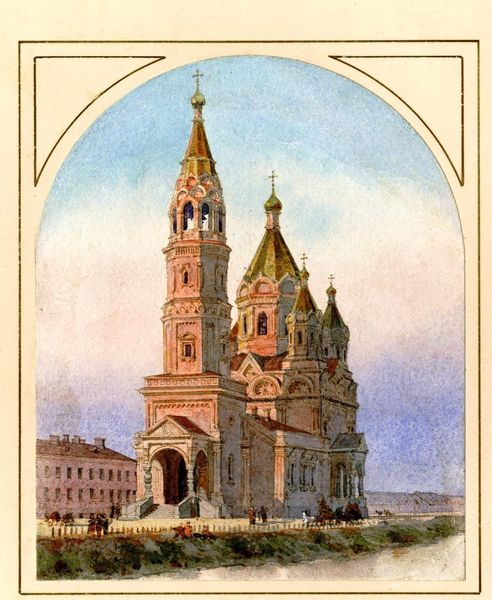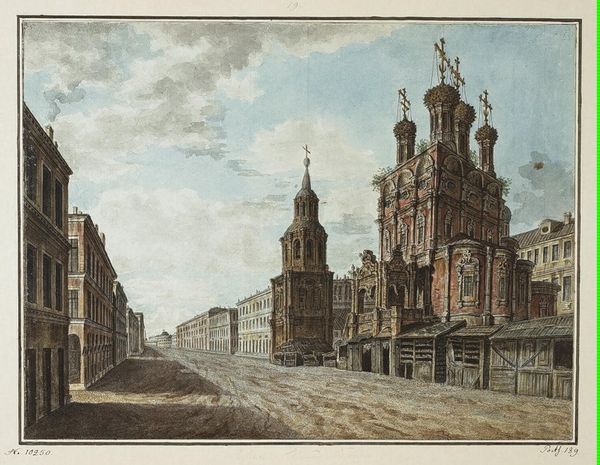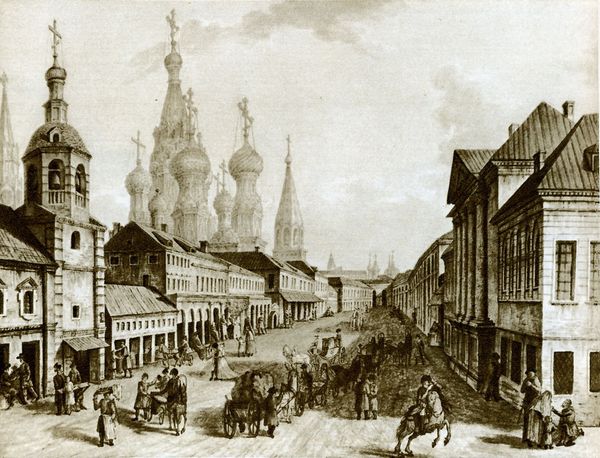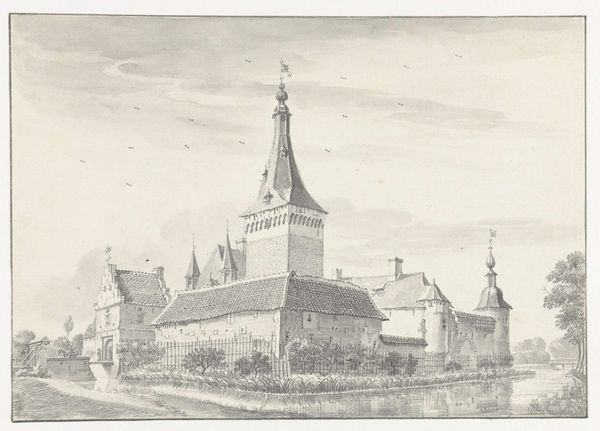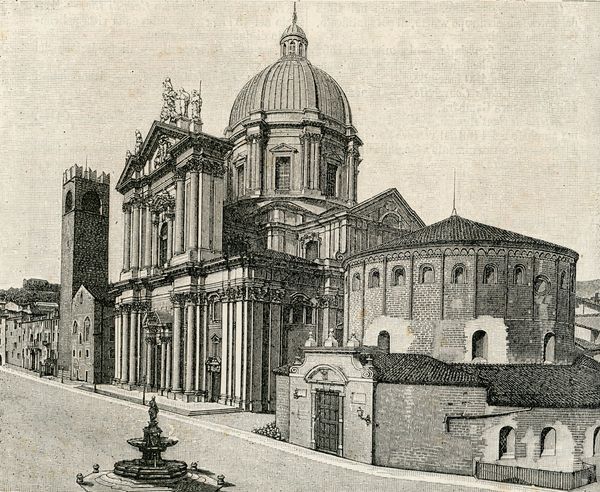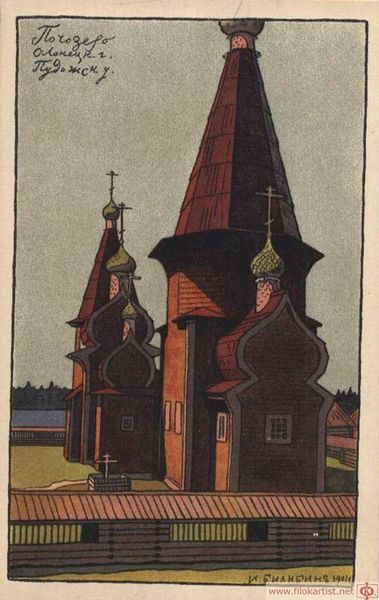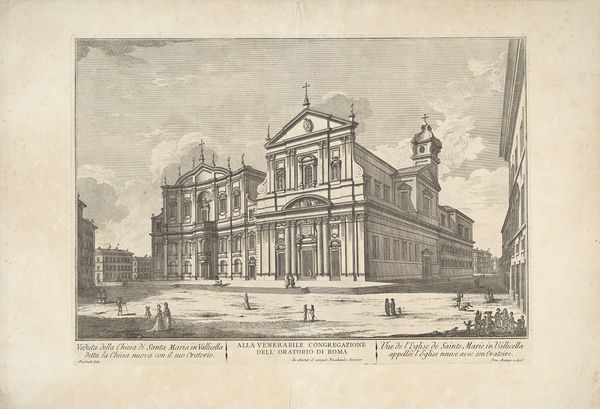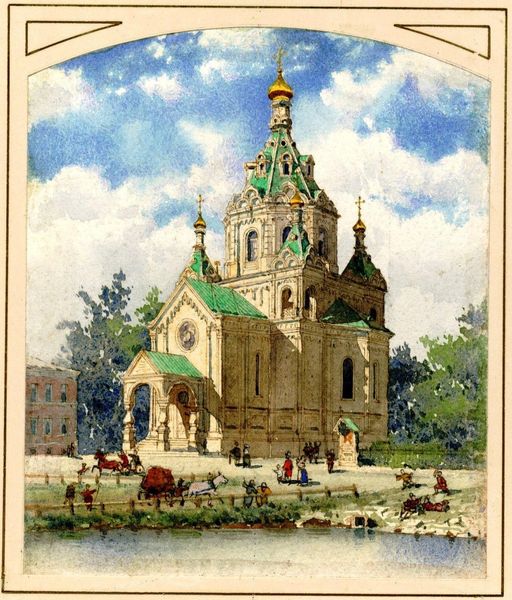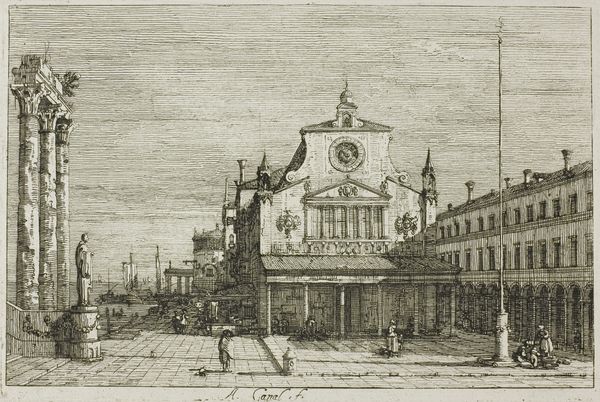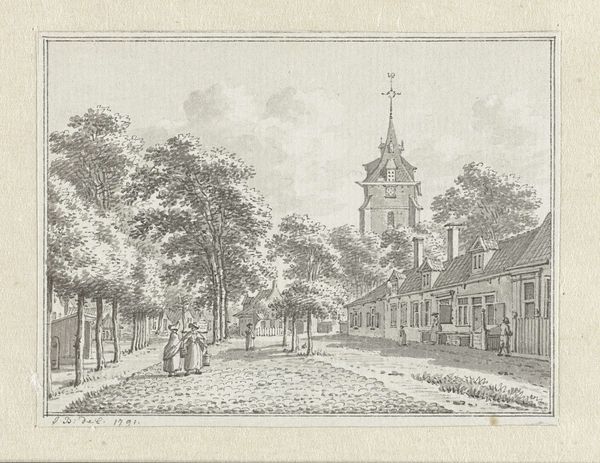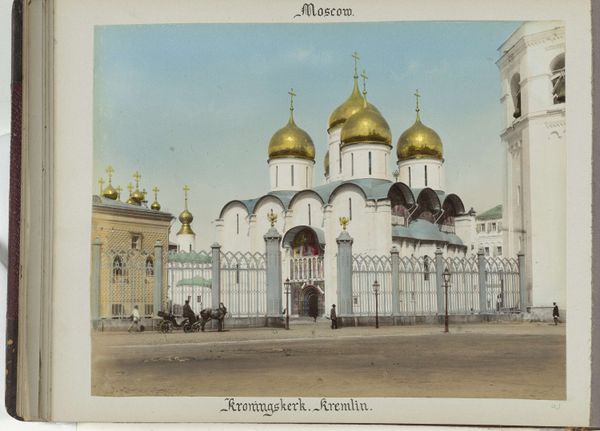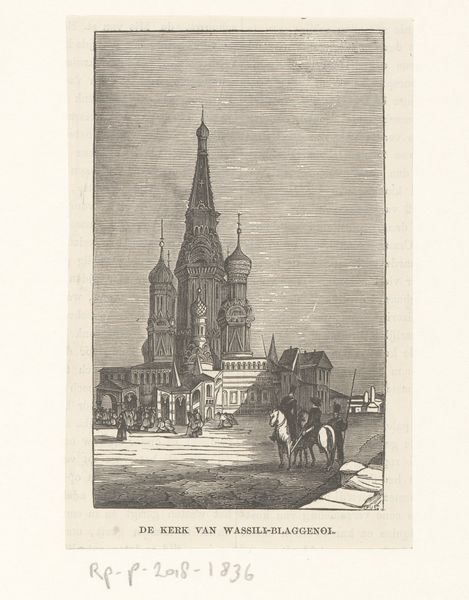
Cathedral of the Annunciation in Nizhny Novgorod 1857
0:00
0:00
tarasshevchenko
Shevchenko National Museum, Kyiv, Ukraine
Copyright: Public domain
Editor: Here we have Taras Shevchenko's "Cathedral of the Annunciation in Nizhny Novgorod," a sepia and white drawing from 1857. It’s interesting how the artist chose to depict it almost as a record, or document of the architecture rather than imbued with much emotion. What catches your eye when you look at this piece? Curator: What's striking to me is how this drawing offers insights into 19th-century Russian society through the very materials and methods employed. The choice of sepia ink itself speaks volumes – a readily available, economical medium reflecting perhaps Shevchenko's own material circumstances or even the perceived value placed on landscape drawing at the time. The work becomes more about process than artistic intent, and even alludes to mass reproducibility. How does the technique speak to the broader context? Editor: Well, considering Shevchenko’s background, and the date 1857…could this relatively simple drawing reflect a sense of... resistance? He was shortly out of political exile then, yes? Maybe using modest materials was a deliberate act? Curator: Precisely. We need to ask: who commissioned this piece and for what purpose? The architecture, its position in the urban landscape... it all underscores socio-political relationships. Examining the cost and source of the paper and ink then offers crucial perspectives beyond just the aesthetic qualities. It shifts art historical enquiry from iconology towards close scrutiny of economic and productive conditions surrounding its creation and consumption. Editor: I never considered analyzing a landscape this way. So, by understanding the 'how' and 'why' of its creation, we gain so much more insight into both the artist's choices, and the culture it represents. Curator: Exactly. Focusing on materiality reveals layers of meaning that traditional art history often overlooks.
Comments
No comments
Be the first to comment and join the conversation on the ultimate creative platform.
